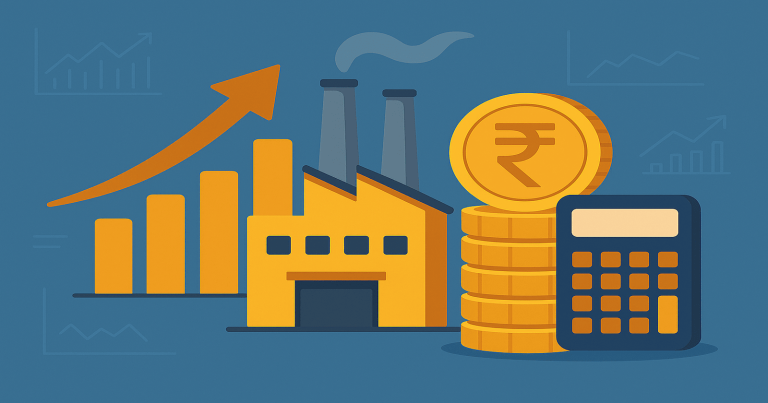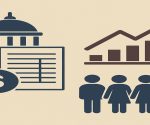In economics, gross investment is one of the most essential terms to measure how much money is spent on new capital. It includes spending on things like new machines, buildings, and equipment that help businesses produce more in the future. When companies and governments spend more on capital goods, gross investment increases. This shows that the economy is growing and getting ready for the future. “gross” means the total amount spent without removing wear and tear or depreciation. So, gross investment includes both the replacement of old assets and the buying of new assets. For example, if a factory buys a new machine and replaces an old one, both amounts will be counted in gross investment. It is a key part of measuring how much an economy is developing.
What is Gross Investment?
Gross investment is the total amount of money a business or a country spends on capital goods during a given time. These goods include buildings, tools, machines, vehicles, and other things used to make products and services. Gross investment consists of the cost of replacing old items (depreciation) and adding new capital.
For example, if a factory spends ₹5 lakh on a new machine and ₹2 lakh to replace an old one, the total gross investment is ₹7 lakh. This total tells us how much new capital has entered the economy.
Gross vs. Net Investment
While gross investment tells us the total amount spent, net investment removes depreciation. So,
| Net Investment = Gross Investment – Depreciation |
If depreciation is very high, the net investment can be very low. However, gross investment always shows an effort to grow and maintain production capacity. Economists use both figures to measure how strong or weak an economy is.
Gross investment plays a significant role in building assets that help produce more goods and services over time.

Key Components of Gross Investment
Gross investment has multiple components. These parts come from different sectors, such as businesses, households, and the government. Understanding these parts helps us see where investment is coming from.
Fixed Capital Formation
This is the most significant part of gross investment. It includes money spent on:
- Machines and equipment
- Buildings and factories
- Vehicles used in business
- Software and IT tools
These items are not used up in one year. They have been helpful for many years and helped make more goods. Fixed capital formation shows the long-term planning of a company or a country.
Inventory Investment
Sometimes, businesses produce goods that are not sold right away. These goods stay in storage and are called inventory. The increase or decrease in these goods is called inventory investment.
If the number of unsold goods increases, the inventory investment is positive. If it goes down, the inventory investment is negative. This component shows changes in business activity and demand.
Residential Construction
This includes money spent on building houses and apartments. Private people or real estate companies may do it. Residential buildings are part of capital goods because they are durable and used for long periods.
Public Sector Investment
Governments also spend money on capital projects like highways, railways, power plants, and schools. These are part of gross public investment. They help build infrastructure and support private sector growth, too.
Importance of Gross Investment in Economic Growth
Gross investment plays a huge role in building a nation’s economy. A country cannot grow fast if it does not invest in new tools, machines, roads, and buildings. Investment helps increase the power of production.
Builds Productive Capacity
When businesses buy machines or build factories, they can produce more goods. This means they can sell more and earn more. This also increases the number of jobs. More production means more money in people’s hands, which grows the economy.
Attracts Private and Foreign Investment
A gross investment rise tells investors the country has a strong base. When they see this, private companies and even foreign investors feel safe to invest money. They believe the government will give them good returns in the future.
Improves Infrastructure and Technology
Investment in infrastructure like roads, power, and transport improves how businesses work. Also, when firms invest in new technology, they become more efficient. This saves money and time and increases output.
Increases National Income and Living Standards
More investment leads to more income generation. People earn more, pay more taxes, and spend more. This increases the demand in the economy. When demand rises, businesses grow even more. In the end, people enjoy better living standards.
Gross investment is like fuel for the economy. The more you invest, the faster the economy runs.
How does Gross Investment Affect National Income and GDP?
Gross investment is one of the main parts of calculating a country’s GDP. It directly affects the income of a nation and its growth rate.
Part of GDP Calculation
GDP is calculated using this simple formula:
| GDP = C + I + G + (X – M) |
Where:
C = Consumption
I = investment (including gross investment)
G = Government spending
X = Exports
M = Imports
Here, I include gross investment. When investment goes up, GDP goes up. If investment falls, GDP may also fall unless other parts rise.
Raises Employment Levels
Gross investment creates new jobs. When businesses open new factories, they hire more workers. This raises household income and spending. As a result, GDP also increases because the economy has more buying and selling.
Boosts Future Growth
The money spent on capital goods today helps in increasing production tomorrow. So, a high gross investment today means higher national income and GDP in the coming years.
Example from India
When India invests in highways, smart cities, and digital services, it shows GDP growth. These investments also create lakhs of construction, logistics, and IT jobs.
In short, gross investment does not just show today’s growth. It builds the base for future growth.
Factors Influencing Gross Investment
Many things affect how much a country or business invests. Some of these come from inside the country. Others come from outside.
Economic Stability and Confidence
If businesses think the economy is stable, they invest more. But if they fear a recession or war, they stop investing. So, confidence matters a lot.
Interest Rates and Credit
When interest rates are low, loans become cheaper. This encourages more investment. But when rates are high, businesses delay their plans. Easy access to credit also boosts investment.
Government Policies
Tax benefits, subsidies, and schemes like Make in India, Startup India, or PLI Scheme increase gross investment. Red tape and high taxes can reduce it.
Global Trends
If global demand rises, businesses invest more to increase exports. However, even large companies stop investing during global slowdowns (like COVID-19).
Technological Advancements
New technology means businesses must upgrade their systems. This leads to more capital spending. Countries investing in innovation and R&D also see more gross investment.
Gross Investment FAQs
Q1. What is a gross investment, in simple words?
Gross investment is the total money spent on new buildings, tools, machines, and other capital goods in a year. It includes both the replacement of old assets and the purchase of new ones.
Q2. How is gross investment different from net investment?
The gross investment includes depreciation. Net investment removes depreciation.
Net investment = Gross Investment – Depreciation.
The gross investment shows total effort; net investment shows a real gain.
Q3. Why is gross investment important for economic growth?
It increases production, creates jobs, and builds infrastructure. When gross investment rises, the economy grows and prepares for the future.
Q4. How does gross investment affect GDP?
Gross investment is a part of GDP. When it increases, GDP usually increases too. More investment leads to more goods, services, and income for the country.
Q5. What are the main components of gross investment?
The main components are fixed capital formation, inventory investment, residential construction, and public sector investment. These together show how much is being invested in the economy.
Q6. What factors affect gross investment in India?
Interest rates, business confidence, government policies, access to loans, and global demand are the key factors affecting India’s gross investment.
Q7. Is gross investment a sign of a healthy economy?
Yes. A high level of gross investment shows that businesses and the government are building for the future. It means more growth, jobs, and income.


